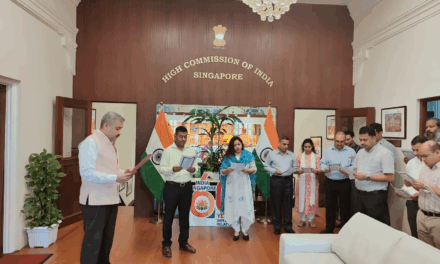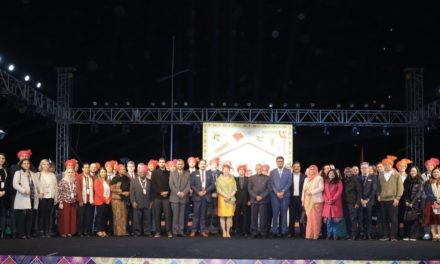
Deputy Prime Minister Heng Swee Keat celebrates the inauguration of Siltronic’s new 300-millimetre wafer manufacturing facility in Singapore.
Deputy Prime Minister Heng Swee Keat attended the opening ceremony of Siltronic’s new 300-millimetre wafer manufacturing facility on June 12, 2024, in Singapore. This event celebrated the launch of Siltronic’s third wafer manufacturing plant in the country, marking a significant milestone in the 25-year partnership between Siltronic and Singapore. The new facility is expected to create around 600 jobs, significantly contributing to Singapore’s goal of increasing the manufacturing sector’s value-add by 50% by 2030.
During his speech, DPM Heng emphasized the importance of semiconductor chips in everyday electronic devices and their crucial role in the ongoing green and digital revolutions. He highlighted the projection that the global semiconductor market would reach US$1 trillion by 2030, stressing the need for advanced chips to drive breakthroughs in areas like quantum computing, AI applications, and green technologies.
Singapore’s approach to strengthening the semiconductor domain involves enhancing supply chain resilience and fostering global cooperation to meet the rising demand for chips and drive innovation. The country has built enduring collaborations with various players across the semiconductor landscape, including companies like Siltronic, GlobalFoundries, Micron, and Applied Materials. These partnerships have significantly contributed to Singapore’s economic growth and created high-quality jobs.

The new facility will introduce silicon wafer epitaxy capabilities to Singapore for the first time, vital for manufacturing advanced semiconductors. DPM Heng commended Siltronic for this investment, which aligns with Singapore’s strategy of public and private R&D investments to advance semiconductor technology. Initiatives like the National Semiconductor Translation and Innovation Centre (NSTIC) aim to facilitate translational research, prototyping, and small-volume manufacturing, driving greater R&D synergies and enhancing economic impact.
Singapore’s semiconductor industry accounts for nearly 40% of the country’s overall manufacturing value-added, making it a key enabler of the Manufacturing 2030 vision. The government’s commitment to investing $28 billion in the national Research, Innovation, and Enterprise (RIE) 2025 Masterplan includes a strong focus on semiconductor R&D. Collaboration between academia and industry, supported by initiatives such as the Singapore Hybrid Integrated Next Generation Micro-Electronics (SHINE) Centre and the National Gallium Nitride Technology Centre, is crucial for driving innovation.
Siltronic’s new Fab-Next facility represents the company’s largest investment in Singapore to date, adding vibrancy and competitiveness to the country’s semiconductor ecosystem. DPM Heng encouraged further collaboration between Siltronic and Singapore’s Institutes of Higher Learning and Research Institutes to advance R&D and innovation capabilities. He also highlighted the importance of nurturing talent with industry-relevant skills through platforms like the Singapore Industry Scholarship (SgIS) Programme and the Industrial Postgraduate Programme (IPP).
In conclusion, DPM Heng reiterated the transformative potential of semiconductors and Singapore’s commitment to growing its overall semiconductor ecosystem. He expressed confidence in the industry’s ability to innovate and produce more productive, powerful, and sustainable wafers and chips. The new facility by Siltronic opens a new chapter in the longstanding partnership with Singapore, promising new opportunities for impactful innovation and collaboration in the semiconductor industry.
Source – PMO















